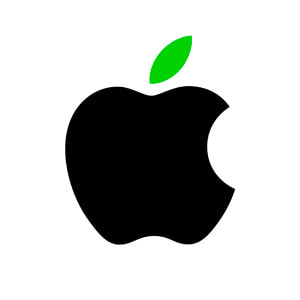
QUICK READ
March 13, 2024
Apple expands innovative Restore Fund with TSMC and Murata
Suppliers will support new nature-based carbon removal projects alongside Apple, as the fund’s initial phase is underway
Today Apple welcomed key manufacturing partners Taiwan Semiconductor Manufacturing Company (TSMC) and Murata Manufacturing as new investors in the Restore Fund, which is designed to scale global investment in high-quality, nature-based carbon removal while protecting critical ecosystems. Global semiconductor foundry TSMC will invest up to $50 million in a fund managed by Climate Asset Management, a joint venture of HSBC Asset Management and Pollination. Murata — an iPhone supplier based in Japan — will invest up to $30 million in the same fund. These new investments build on Apple’s previous commitment of up to $200 million for the Restore Fund’s second phase, bringing the total to $280 million in committed capital.
Apple also announced the partners in the Restore Fund’s initial phase, launched in 2021. Through these investments, Apple, Goldman Sachs, and Conservation International are partnering with experienced forestry managers — Symbiosis, BTG Pactual Timberland Investment Group, and Arbaro Advisors — to support the creation of sustainably certified working forests on degraded pasture and agricultural lands in South America. Apple expects the portfolio to exceed its goal of removing 1 million metric tons of carbon dioxide from the air by 2025.
“When businesses invest in nature, they’re also investing in healthier communities, a more resilient global economy, and a critical tool in the fight against climate change,” said Lisa Jackson, Apple’s vice president of Environment, Policy, and Social Initiatives. “The Restore Fund is already delivering real benefits for communities and ecosystems in South America while removing carbon from the atmosphere. And we’re thrilled to see suppliers join us by investing in nature on top of their urgent work to decarbonise their businesses.”
High-Quality Investments in Nature
To select the portfolio of projects in its first phase, the Restore Fund carefully assessed prospective managers and investments to ensure they meet robust environmental, social, and governance criteria, and strict standards for quality, scalability, and impact. Most potential investments are screened out through this intensive due diligence process, which is further detailed in a recent white paper on Apple’s carbon removal strategy.
To select the portfolio of projects in its first phase, the Restore Fund carefully assessed prospective managers and investments to ensure they meet robust environmental, social, and governance criteria, and strict standards for quality, scalability, and impact. Most potential investments are screened out through this intensive due diligence process, which is further detailed in a recent white paper on Apple’s carbon removal strategy.
All projects selected for the Restore Fund undergo regular assessments to monitor forest change and growth over time, address fire and other potential risks, and verify forest carbon stock. As part of this analysis, Apple and partners — including Space Intelligence and Upstream Tech — have used innovative tools such as LiDAR on iPhone, satellite data, bioacoustic monitoring, and machine learning to evaluate the wellbeing of the land and project progress.
The projects in the Restore Fund’s first phase all share a goal of creating new, responsibly managed working forests to help meet increasing global demand for timber and reduce pressure on natural forests. The projects will be managed by:
- Arbaro Advisors, which is building a portfolio of forestry projects across Latin America, including Apple’s first Restore Fund project in Paraguay, to develop sustainably managed eucalyptus farms while strengthening livelihood opportunities for local communities and protecting natural ecosystems in the project area.
- BTG Pactual Timberland Investment Group, which is working to restore and protect natural ecosystems on half of the project area while planting the other half with commercial species, like eucalyptus.
- Symbiosis, which is developing native seedlings to grow working forests of native tropical hardwoods while protecting natural forests in Brazil’s Atlantic Forest.
These managers will ensure all projects meet the Restore Fund’s rigorous standards.
Progress to Carbon Neutrality
TSMC and Murata are among the more than 300 suppliers in Apple’s Supplier Clean Energy Program, having committed to achieving 100 percent renewable electricity for all Apple production by 2030. In 2022, Apple called on its suppliers to go even further and decarbonise all of their Apple-related operations by the end of this decade. This includes addressing unavoidable residual emissions with high-quality carbon removal.
TSMC and Murata are among the more than 300 suppliers in Apple’s Supplier Clean Energy Program, having committed to achieving 100 percent renewable electricity for all Apple production by 2030. In 2022, Apple called on its suppliers to go even further and decarbonise all of their Apple-related operations by the end of this decade. This includes addressing unavoidable residual emissions with high-quality carbon removal.
The fund TSMC and Murata are investing in alongside Apple will pool regenerative agriculture projects with ecosystem conservation and restoration projects in order to generate both carbon and financial benefits. Project selection is currently underway.
The Restore Fund is an important component of Apple 2030, the company’s ambitious goal to be carbon neutral across its entire value chain by the end of this decade. Apple is laser-focused on driving down its carbon footprint by 75 percent from 2015 levels through direct emissions reductions and will address residual emissions with high-quality carbon removal. The company only retires credits from carbon projects where verified removal has already occurred, and only uses credits to address residual emissions that are difficult to avoid or abate with today’s available solutions.
Media
-
Text of this article